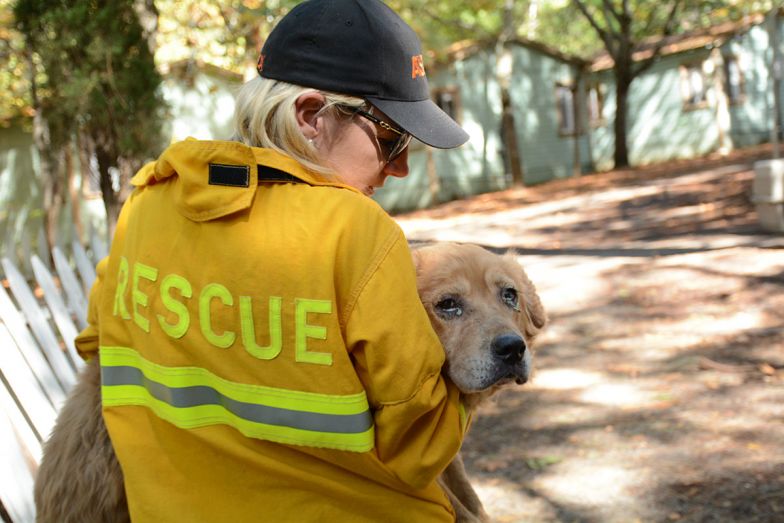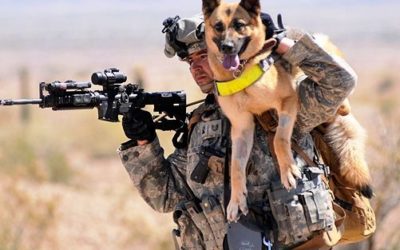When disasters such as earthquakes, hurricanes, tornados, floods, or fires strike a community, the impact reaches not only people but also resident livestock and companion animals. The impact on animals can include animals getting stranded and needing rescue, or permanent separation of companion animals from their owners or fosters.
Recent disasters highlighted the need for emergency response plans that include provisions for pet evacuations and to communicate relevant information to our fosters and volunteers. It is important for the Animal Emergency Preparedness Plan to be flexible and scalable, providing the protocols needed in the event of any disaster.
What To Do in the Event of An Emergency
If you have to evacuate please take all pets in the home, including foster pets. If it’s not safe for you to remain in your home, then it is not safe for the pets in your home to remain either.
Evacuate early. Don’t wait for an emergency evacuation order. Evacuating before conditions become severe will keep everyone safer and make the process less stressful.
Be Prepared!
1. Check for and prevent any hazards that may already exist in your home such as:
- Propane tanks – ensure they are safely kept
- Monitor candles and heat emitting appliances such as ovens, stove, or clothes iron
- Don’t overload electrical outlets
- Test smoke alarms frequently to ensure they are in working order
- Purchase a fire extinguisher and learn how to use it
- Prevent carbon monoxide leaks by having your HVAC system, water heater, and other appliances that use gas, oil, or coal serviced by a professional every year
- Make sure to always keep anything that gives off heat at least 3 feet away from flammable materials or items
- If you have a fireplace, make sure your chimney is checked and cleaned by a professional once a year. Use a metal or glass screen that is large enough to prevent escaping embers
- Check the testing labels on all major appliances that indicate you purchased them in safe working order. You may not find testing labels on older appliances, so consider whether it’s time to replace them or have them checked by a professional.
- Avoid cluttering debris or junk near a furnace, heater or nay heat source
2. Make sure that all information on identification tags and microchips are current and that both include your cell phone number and the contact information of a backup contact.
3. Prepare a disaster kit that includes:
- Food & water for at least 5 days
- Bowls
- Manual can opener
- Medications and vet records
- Litter, litter boxes and/or poopie bags
- Harnesses, collars with tags (preferably martingale collars so your dog can’t “back out” of the collar in fear), leashes and crates/carriers
4. In the event another foster home is needed, write down anything a temporary foster may need to know about your pet(s) and foster pet(s) including behavior, feeding times, any medical issues, medication, etc.
5. Develop an evacuation transport plan including where pets will immediately go in an emergency (car, neighbor’s house, etc). Determine the number of crates or carriers needed, and an emergency destination (Red Cross or FEMA shelter, family or friend’s house, vet’s office, etc.).
- Contact hotels/motels that are at least 50 miles from you to see if they take pets during an emergency.
- Other essential supplies to store in a secure room in the home:
- Nonperishable food
- Bottled water
- Battery-powered radios
- First-aid supplies
- Flashlights
- Batteries
- Duct tape
- Plastic sheeting
- Plastic garbage bags
Fires and Emergency Situations in the Home
In the event of a fire or emergency situation, call 9-1-1 immediately! Then:
- Notify all people in your home as soon as possible by sounding any form of alarm- air horn, whistle, smoke alarm, or verbal.
- Provide instructions to all occupants of the home as to where to exit and where to go once they exit the home.
- Once all occupants including pets in the home are safe and emergency personnel have arrived on the scene, contact a friend or family member to notify them of the emergency and your location. Also provide an alternate contact number for anyone who is with you.
Under no circumstances should you attempt to fight a fire that has passed the incipient stage (that which can be put out with a single fire extinguisher), nor should you attempt to enter a burning building to conduct search and rescue. These actions should be left to emergency services professionals who have the necessary training, equipment, and experience (such as the fire department or emergency medical professionals). Untrained individuals may endanger themselves and/or those they are trying to rescue.
Evacuation Routes
Develop an evacuation route plan of your home, assign a Designated Assembly Area or Evacuation Site for your home.
- Designated Assembly Area (DAA) is an outside location at least 50 feet from the building, away from roads and walkways used by emergency vehicles
- Evacuation Site (ES) a building in close proximity to the evacuated building that will provide protection from the weather or other elements in the case of a prolonged evacuation.
If an emergency occurs while at home or work, local emergency personnel will instruct and direct you to the nearest DAA or ES.
Discuss all emergency evacuation plans with all members of your household.
- Appoint 1-2 people responsible for evacuation assistance in your home.
- In the event that a fire/emergency alarm is sounded or instructions for evacuation are given:
- Everyone should immediately exit the premises/building(s) at the nearest exits, as shown in the escape route
- Meet as soon as possible at the Designated Assembly Area.
- The people responsible for evacuation are to check all rooms for occupants and pets.
- Once a room has been checked and cleared, close the door to that room, but leave it unlocked. This will decrease the chances of a fire spreading.
- Leave home exit doors open to allow any pets that may remain to escape to the outdoors. If you must, break a window to the room where you think pets may be hiding.
Securing Property and Equipment
In the event that evacuation of the premises is necessary make sure that gas mains, electricity breaker boxes and water mains are shut off. Determine who in your home will be responsible for shutting off this equipment in your home.
Accounting for members of your household after an evacuation
Once a home evacuation has occurred to an evacuation site, an adult should account for each person and pet that was in the home and report this to emergency personnel.
Home Evacuation Re-entry
Once your home has been evacuated, do not re-enter it for any reason. All members of the home should remain at the Designated Assembly Areas or Evacuation Sites until the fire department or other emergency response agency notifies you that either it is safe to re-enter, or if relocation to a new location is discussed and determined.
Sheltering in Place: When not to evacuate
In the event of an emergency where authorities may determine that it is safer to remain where you are rather than evacuate in such instances as chemical, biological, or radiological contaminates have been released into the environment in such quantity and/or proximity to your home, please follow all instructions by emergency personnel and do the following:
- Immediately lock exterior doors and close windows, doggy doors, and air vents.
- Turn off, seal, or disable all fans, heating and air conditioning systems, and clothes dryers, especially those systems that automatically provide for exchange of inside air with outside air.
- If there is a danger of explosion, close the window shades, blinds, or curtains.
- Ensure all pets are inside.
If you have a room you can designate as a “safe room,” put your emergency supplies in that room in advance. A safe room is a room that has no windows or exposure to the outside such as a walk-in closet, bathroom, basement or underground shelter. Bring all supplies listed above (pet crate and supplies, any medications and a supply of pet food and water inside watertight containers, along with your other emergency supplies.) If there is an open fireplace, vent, pet door or similar opening in the house, close it off with plastic sheeting and strong tape.
Write down the names of everyone in the home and inform emergency personnel outside of the building of who is in the room. Listen to the radio, monitor TV, phone or check Facebook updates. Do not come out until you know it’s safe and have been instructed to do so by emergency personnel.
Reporting Emergency Situations
All emergency situations must be reported as soon as possible. Emergency situations may include but are not limited to fires, earthquakes, floods, vehicle accidents during animal transport, injuries incurred by human or animal from bites and animal injuries incurred during physical exercise.
We want to ensure all members of your home are safe and accounted for in case of an emergency – both people and pets. For more information and tips on emergency situations, please visit the Red Cross and FEMA web sites. Also, please contact your local animal shelter and discuss their emergency plans for animal evacuations. You should also contact neighbors, family and friends to discuss emergency plans.
‘Tis the Season for Pet Allergies
Think only humans suffer from seasonal allergies? Think again! Like humans, pets can experience the negative effects of allergies. The most common pet allergies are fleas and seasonal allergies due to environmental elements such as grass and pollen. Symptoms of...
Today Marks National Dog Fighting Awareness Day
Dog fighting is one of the worst acts of animal abuse that exists today. The Humane Society estimates that there are over 40,000 "professional" dog fighters in U.S., and there could be an additional 100,000 "street" dog fighters. It is a cruel and inhumane money...
PATIENCE, LOVE AND DETERMINATION
Patience, Love and Determination. These are the three words that come to my mind when I think of animal rescue. My name is Angel Salazar. I am a volunteer with Paw Prints in the Sand Animal Rescue and this is what I have learned so far from volunteering with them. I...
HOW TO KEEP YOUR PETS SAFE THIS HOLIDAY SEASON
Christmas, Hannukah, Kwanzaa… No matter what you celebrate, your holidays are filled with celebration. But, that doesn’t always mean you have to include your pets in the festivities. Funny pet videos, gifts for pets, and even trying to make them a part of the holiday...
Interested in Fostering? Here’s How!
When you decide to foster a rescue pet, you are giving that pet a second chance at life. To set aside time and energy to help save a homeless pet; It is the most selfless thing you can do to! We believe pets belong in a home and not stuck in some boarding facility....
THE AMAZING HISTORY OF MILITARY SERVICE DOGS
Service dogs: A man’s best friend. These specially trained dogs have been working alongside dedicated women and men who’ve served our country and involved in the United States military since the Revolutionary War. At that time, those dogs were used as pack animals,...
Happy World Spay Day! (Neuter too!)
Today is World Spay Day! Yay! Why dedicate a whole day to it? Every year, 2.7 million companion animals are put to sleep in our nation’s shelter system. This is primarily due to overcrowding and people not spaying or neutering their pets. It costs American taxpayers...
Adopting for the Holidays? Shelters vs. Rescues
Recently, a man walked into the Petco store where we have our rescue kittens on display. He was looking to adopt a dog. The store clerk politely sent the man to see me, letting him know that I was the rescue representative. He was looking for a small white dog for his...










Recent Comments